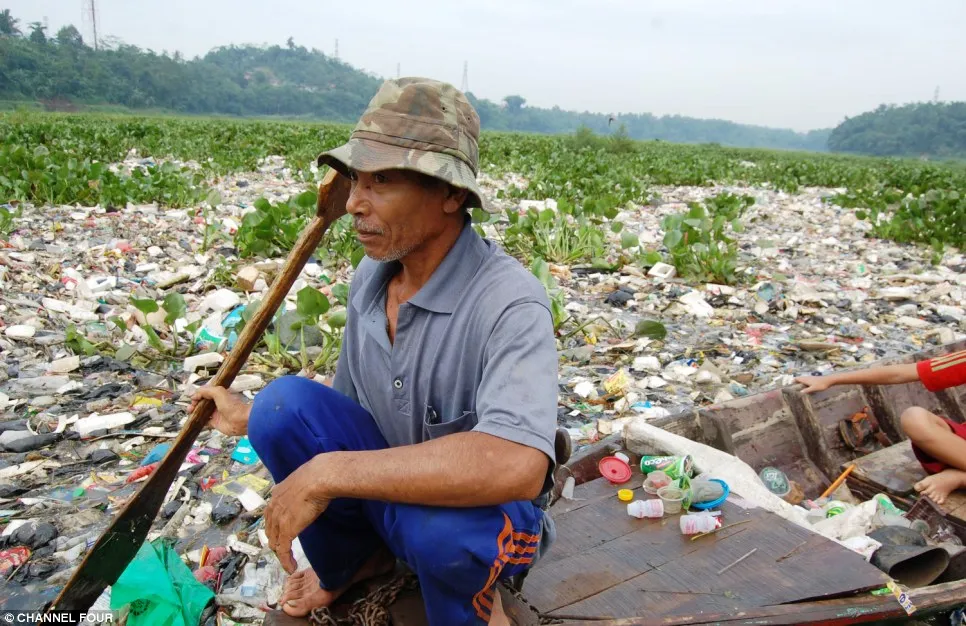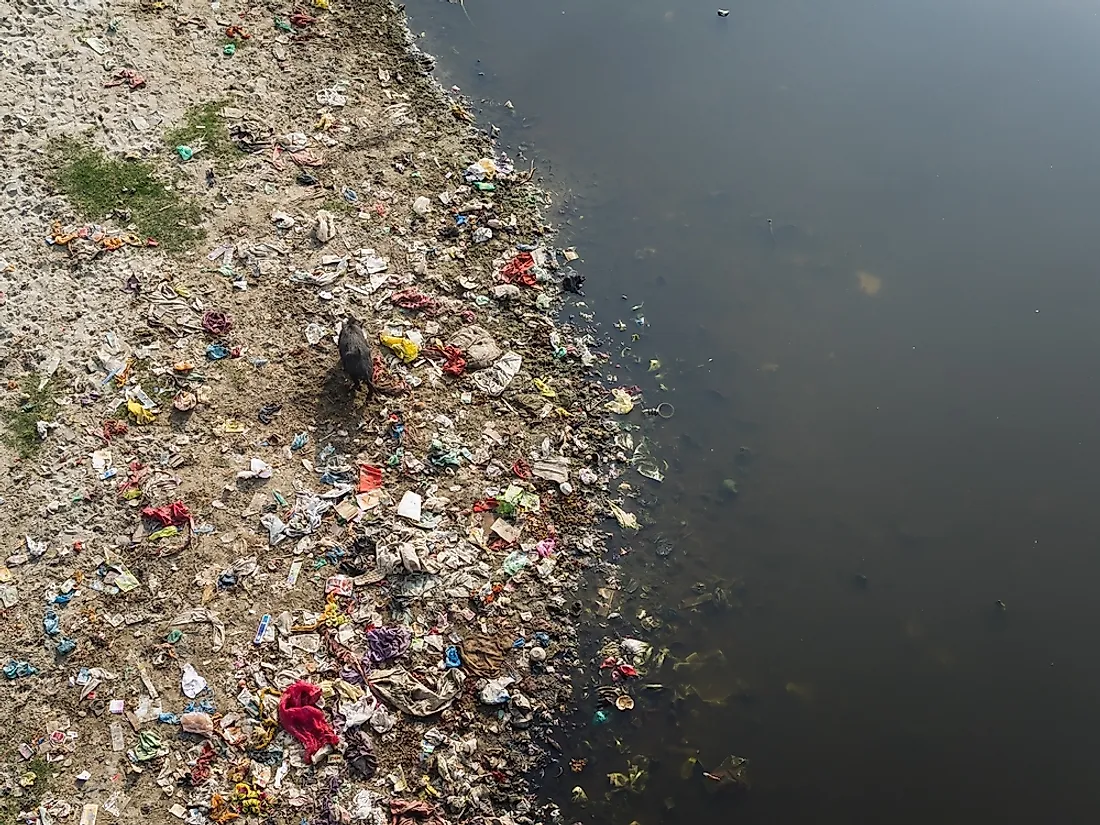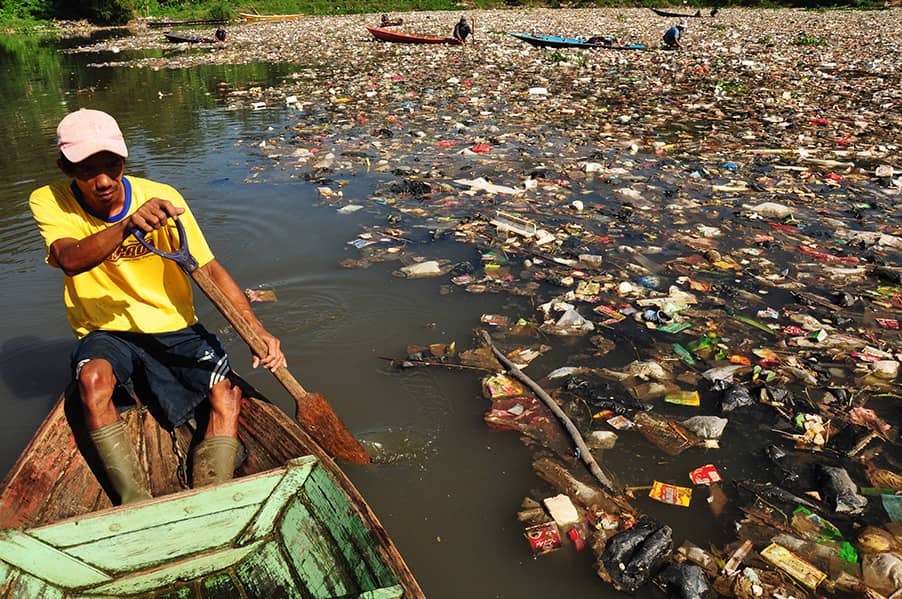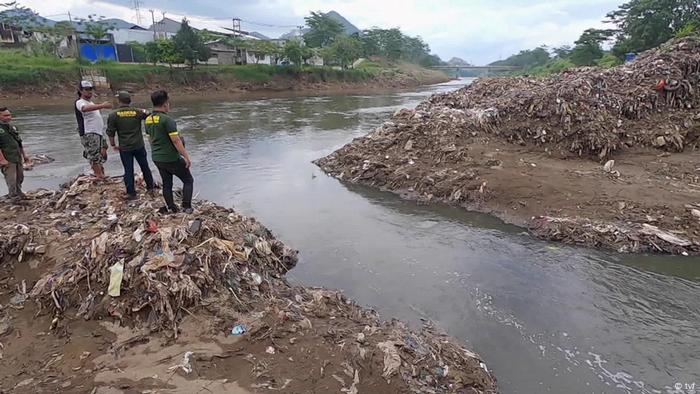
Problems
Chitarum in Indonesia: the world's most polluted river
One of the saddest proofs of human disregard for nature is the Citarum River on the Indonesian island of Java. Twenty years ago it was clean and beautiful and its waters were used to irrigate rice paddies and for domestic purposes. Unfortunately, the river has become infamous worldwide - it is now considered one of the dirtiest on the planet. Some 9 million people live in close contact with the river, where levels of fecal coliform bacteria are more than 5,000 times the mandatory standards, according to findings by the Asian Development Bank in 2013. Lead levels in the river are more than 1,000 times the U.S. Environmental Protection Agency's drinking water standard, and other heavy metals such as aluminum, iron, and manganese exceed the international average. Chitarum is located in West Java, Indonesia. The Chitarum River is not very big. It is approximately 10 meters wide, less than 5 meters deep, and up to 300 km long. It originates in Indonesia, stretches along the whole of West Java, and flows near the capital Jakarta. The river flows into the Java Sea. The Asian Development Bank called it the dirtiest river in the world.
The reason for the pollution
The reason for this is the industrialization of Indonesia. The country began to develop rapidly, building many industrial plants and factories. Most of them are located on the island of Java. Production needs water, so many industrial plants were also built along the banks of the Sitarum River. Whether in the pursuit of profit, because of an unwillingness to care about the environment, or because of a lack of intelligence of the authorities, almost all enterprises did not build expensive sewage treatment plants and waste disposal, and took the path of least resistance: all waste is dumped and poured into the river. Cities also did their part by replenishing the water level in the Sitaruma with wastewater. Now more than 500 organizations dump their waste into the river. In addition, all trash and sewage end up in the Sitaruma. This is the waste of more than 9 million people.
Pollution levels in the river
Sections of the Sitarum are so polluted that the water is not in contact with the air in some places. That is to say, here the garbage completely covers the water body. The Sitarum has become a real dumping river. Garbage is dumped into this river from its very headwaters. Industrial waste and sewage are dumped here. Despite this, the Sitarum is an important site for several communities. About five million people live near the river. For locals, it is the only source of water. It is used for cooking, watering farmland, and watering animals.
Who suffers the most from pollution?
The residents of the villages closest to the river suffer the most since they have no source of fresh water besides the Citarum. Risking their health and even their lives, they are forced to use the dirty river water for cooking, watering their gardens, and household needs. However, many of them have even learned how to make money from their environmental woes: the residents sail the river in boats all day long, catching more or less usable items from the garbage and then selling them as second-hand goods. Of course, fish are not found in such conditions. The river was rich in fish, trill, and songbirds not so long ago, and blooming gardens grew on its banks. Now all you can see is plastic trash. The fish died out a long time ago. Only bacteria breed here. The Indonesian government, after pressure from international organizations such as Greenpeace about the state of the river, has developed a seven-year program to clean up the Sitarum to make its water drinkable by 2025.
Gallery
5Timelines
2022
March 09
The government is responsible for the pollution of rivers. It is their responsibility to create regulations to protect rivers from waste pollution, monitor compliance with regulations, and provide proper waste disposal facilities for citizens and industries. If they do not perform this function, it makes sense that Indonesia has the dirtiest rivers in the world. The government has created and implemented embargo regulations on the illegal dumping of waste into the river. Moreover, they have also regulated the disposal of industrial waste to avoid polluting rivers. Nevertheless, 46% of Indonesia's rivers are polluted with hazardous waste. This indicates that the regulations on industrial waste disposal are not properly enforced. The same problem is reflected in the rivers' numerous illegal waste disposal sites. This is due to the limited number of waste disposal facilities and the lack of control by the authorities. The provincial government of West Java presents the Citarum Harum Project for the restoration of the Citarum River in 2025. Twelve strategies such as critical land treatment, industrial waste, livestock waste, domestic liquid waste, floating net cages, waste management, area control, water and tourism management, law enforcement, education and community empowerment, research and development, and data management, information, and public relations are prepared to achieve the goal.
2021
December 11
The government estimates that the Citarum Harum ("Fragrant Citarum") program, which will end in 2025, will require 34.8 trillion rupees ($2.34 billion). This includes numerous infrastructure projects and daily dredging, cleaning, and patrolling.
Activists and experts also noted that, for now, the success of the Fragrant Citarum program relies heavily on efforts to constantly monitor and find evidence of environmental law violations and ongoing efforts to clean up the garbage that pollutes the Citarum.2019
February 25
Very complex anthropogenic activities in the Citarum River basin have resulted in multiple conflicts of interest in the Citarum watershed, and the Citarum River has become the third dirtiest river in the world. According to research by Prof. Dr. Etty Riani, professor of the Faculty of Fisheries and Marine Sciences (FPIK) of the Bogor Agricultural Institute (IPB), Prof. Dr. Etty Riani, the Chisanti Spring and Situ Chisanti, which are at ground zero, were polluted with heavy metals and organic materials. "The Chitarum River is also a dumping ground for industrial waste and other activities, the amount of which is growing and becoming more diverse. There is a significant increase in toxic materials and organics from the Situ Chianti River as it enters the industrial site. Pollution continues to increase as far as Sagulating Reservoir. Then, it tends to decrease toward the Chirata Reservoir and is relatively fixed up to the Jatiluhur outlet. Based on the depth, we can see that the deeper the reservoir, the more pollution and toxic materials. Where floating net cages (KJA) are established, pollution and toxic materials also tend to increase. Even in KJA benthic animals are disappearing. Even if there are, as in Saguling, many people who experience disabilities," he explained during a press conference for a pre-scientific talk at IPB Baranangsiang Campus, Bogor (22/2).
2018
May 28
Every day at least 20,000 tons of waste and 340,000 tons of sewage, mostly from 2,000 textile factories, are dumped directly into the once clean and pristine waterways of the Citarum River. Since February 1, 2018, a total of 7,100 joint personnel, led by the Indonesian army, have been divided into 22 sectors along this 300-kilometer river to clear the river and return plant life to critical lands around the Citarum. Reforestation on the Tsitarum is critical - 2,500 hectares of Sector 1 land upriver and 80,000 hectares of land adjacent to the river have been hit hard by rapid industrialization in the region since the 1980s. Colonel Ianto, the coordinator of the Sector 1 Citarum Cleanup Program, said it is estimated that reforestation will require planting 125 million trees - 25 million hardwoods and 100 million shrubs - near the river.
February 10
In 2018, the Indonesian government established the Citarum Harum program, a seven-year river restoration program that aims to make Citarum's water drinkable by 2025. It's not an easy task, but it has strong support.
2017
May 21
According to the World Integrated Trade Solution, Indonesia is now "one of the top 10 textile and apparel producers in the world, exporting more than $12.7 billion. As the Indonesia Investments article notes, the industry employs more than 3 million workers in various corporations and is an important sector for the Indonesian economy. Industrial waste in the river has contaminated 2,300 acres of rice fields with heavy metals, resulting in an economic loss of more than $866 million over two decades of pollution.
2008
December 05
The Asian Development Bank approved a $500 million loan to clean up the river, calling it the dirtiest in the world. Environmentalists note that more than 20,000 tons of waste and 340,000 tons of sewage from textile factories are discharged into the river every day. This pollution has resulted in the destruction of much of the fish population in the river, which has been estimated at 60% since 2008.
1980
January 01
The rapid industrialization of Indonesia began, which in 40 years led to the complete pollution of the Citarum River.



